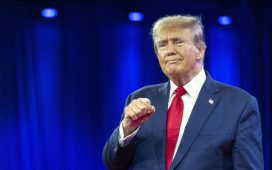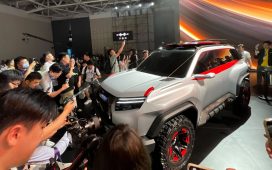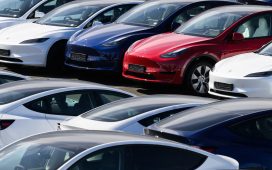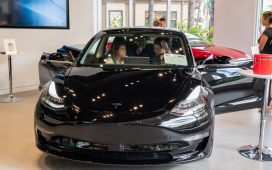And it might turn heads in markets outside the U.S., including the Middle East and Australia, where three-row models are popular, said Christian Meunier, Jeep’s global president. A redesigned two-row version, which will have a hybrid variant, is expected to reach the brand’s roughly 2,400 U.S. dealerships in the third quarter.
“We think the potential of Jeep is not optimized yet. I think there’s still a lot of room for us to grow,” Meunier told Automotive News. “The three-row expansion for Grand Cherokee is a big step. The Grand Wagoneer [and] the Wagoneer, another step. The electrification of Jeep — really another way to expand the brand and to make the brand even sexier than it is today.”
Meunier said he sees “an opportunity to broaden our appeal to people today that like Jeep but are not considering Jeep.” The goal is “to make Jeep bigger without diluting the brand and the DNA,” Meunier said. “That’s core to it.”
Jeep has been core to FCA, which nurtured the SUV brand from what had been the smallest of the three Chrysler Corp. brands when DaimlerChrysler unraveled 14 years ago into the sixth-largest make in the U.S. Beyond Jeep and the hugely profitable Ram line of pickups, the postmerger future isn’t nearly as clear for other FCA brands — particularly Chrysler, Alfa Romeo and Fiat.
The tie-up falls in line with the vision of former FCA CEO Sergio Marchionne, who was vocal about the need for industry consolidation before his 2018 death.
But challenges could emerge early on as Stellantis deals with a slowed global economy still confronting a pandemic. If the vehicle market remains stable, this year should be fairly quiet for the company before it starts exploring “operational synergies” in the second year, said Daron Gifford, leader of the automotive practice at business advisory firm Plante Moran.
Things could get rocky if the health crisis drags on or worsens, Gifford said, and necessitates major organizational changes.
“We finished the year pretty strong here, so if there’s something that occurs, either pandemic or otherwise, and volume started to tank, the auto industry is very fragile,” Gifford said. “Once it kind of goes below a certain breakeven point, the losses get pretty catastrophic quickly because they have such a high fixed-cost structure.”








